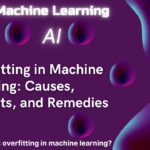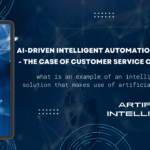which business case is better solved by artificial intelligence (ai) than conventional programming?
Introduction
In the fast-paced world of technological evolution, the fusion of Artificial Intelligence (AI) with various industries has become a catalyst for innovation. While traditional programming has long been the backbone of software development, AI presents itself as a paradigm-shifting alternative in scenarios where its capabilities outshine conventional programming techniques. In this comprehensive blog post, we delve deep into real-world scenarios where AI demonstrates its prowess, offering solutions that eclipse those achievable through traditional programming methods.
Decoding the Distinction: AI vs. Conventional Programming
Artificial Intelligence (AI) refers to the creation of algorithms and systems that enable machines to perform tasks that conventionally require human intelligence. These tasks encompass natural language comprehension, pattern recognition, predictive analysis, and the ability to learn from data.
Conventional Programming, in contrast, involves manually coding explicit instructions for computers to follow step by step, guided by pre-defined rules.
Business Cases Transformed by AI
Natural Language Processing (NLP):
Imagine a scenario in which a company seeks to develop an advanced customer support chatbot capable of comprehending and responding to diverse customer queries in natural language. Traditional programming might necessitate a vast set of meticulously crafted rules to account for different input possibilities. However, AI-driven NLP models, like those fueling cutting-edge chatbots, can interpret and process the intricate nuances of human language, adapting seamlessly to linguistic variations and emerging language trends.
Fraud Detection and Prevention:
Within the realm of finance, the challenge of identifying fraudulent transactions looms large. Conventional programming might involve creating rule-based criteria to flag suspicious activities. Nevertheless, AI thrives in anomaly detection. By harnessing machine learning algorithms, AI can analyze extensive datasets, discern patterns of legitimate and fraudulent transactions, and adapt to ever-evolving tactics employed by fraudsters, yielding a more accurate and adaptable solution.
Image and Speech Recognition:
In industries reliant on image or speech recognition, AI showcases remarkable capabilities. Developing traditional programs to discern objects within images or transcribe spoken language could be intricate and time-intensive. AI models, such as Convolutional Neural Networks (CNNs) and Recurrent Neural Networks (RNNs), can be trained on expansive datasets to achieve highly accurate image and speech recognition without the necessity for explicit programming rules.
Recommendation Systems:
Sectors like e-commerce and entertainment heavily rely on recommendation systems to enhance user experiences. Traditional programming methodologies might involve establishing fixed rules for suggesting products or content. AI-powered recommendation systems leverage user behavior data and advanced algorithms, such as collaborative filtering and content-based filtering, to offer personalized and dynamically adaptive suggestions that evolve with time.
The Advantages of AI over Conventional Programming
Adaptability:
One of AI’s most significant advantages lies in its inherent adaptability. AI solutions can seamlessly accommodate new data and changing circumstances without the need for manual intervention. This adaptability proves invaluable in dynamic environments where traditional programming methods would necessitate constant updates.
Complex Pattern Recognition:
AI excels in recognizing intricate patterns and correlations in data that might prove challenging to encode using conventional programming methods. This becomes particularly vital when dealing with multifaceted, real-world scenarios.
Efficiency in Data-Driven Tasks:
AI’s prowess in processing and deriving insights from extensive datasets positions it as an efficient choice for tasks involving data classification, processing, and prediction. It offers rapid and accurate results that conventional programming might struggle to match.
Rapid Learning and Iteration:
AI models possess the capability to learn and evolve over time through iterative processes. This feature makes them immensely valuable for tasks that require constant refinement and improvement.
Conclusion: Embracing the AI Revolution
While conventional programming remains an indispensable cornerstone of software development, AI’s emergence has introduced a transformational paradigm in the way we approach complex problems. The cases highlighted above illustrate how AI’s ability to learn from data, recognize intricate patterns, and adapt to dynamic conditions positions it as a formidable tool for industries seeking innovative solutions. As we navigate the ever-evolving technological landscape, the synergy between AI and conventional programming will continue to redefine the boundaries of possibility, paving the way for a future where innovation is limitless and unbound.










